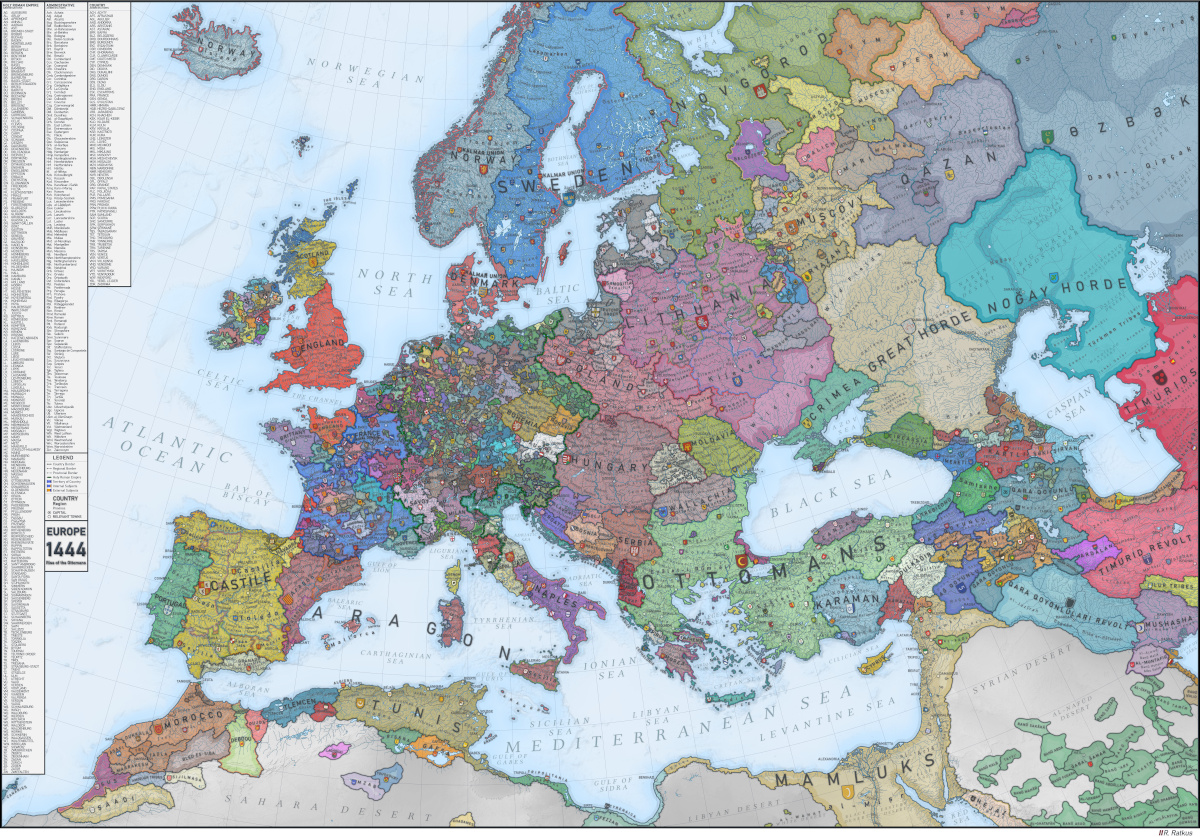Spain was the only other state in western Europe with a claim to great power status. Sweden and the Dutch republic could no longer sustain the major international roles they had undertaken during the seventeenth century.
The Great Northern War had withered Sweden’s Baltic empire. The Dutch, exhausted by their wars against Louis XIV, could not afford a large navy or an energetic foreign policy. Still, Dutch seaborne trade remained substantial, and the republic settled down to a life of relative prosperity and decreased international significance.
Spain suffered comparatively little damage from the War of the Spanish Succession of the early 1700s. The loss of Belgium and parts of Italy in the Utrecht settlement of 1713 reduced the unwieldy Spanish domains to more manageable size, and Philip V (r. 1700-1746), the first Bourbon monarch, infused fresh life into the country’s traditional institutions. Philip and his advisers cut down the excessive formalities and long delays of Spanish administration, reasserted the authority of the monarchy over the nobility and clergy, improved the tax system, encouraged industry, built up the navy, and fortified strategic points of the Spanish Empire in America.
This new administration, however, did not strike at the root causes of Spanish decline. The greed of governors and the restrictions of mercantilism still checked the growth of the colonies. The mother country remained impoverished, burdened with noble and clerical castes, and hampered by inadequate resources.
Philip V himself was neurotic and was dominated by his strong-willed second wife, Elizabeth Farnese. Since Philip’s son by his first marriage would inherit Spain, Elizabeth was determined to find thrones for her own two sons, and her persistent attempts to secure Italian states for them repeatedly threatened the peace of Europe.
During this time Spain was also preoccupied with events in Italy. By 1715 the Italian states had lost much of the political and economic power they had enjoyed during the Renaissance. The opening of new lands overseas and the rise of the Atlantic powers had diminished the importance of the Mediterranean. In the Mediterranean itself, the Ottoman Turks and their satellites in North Africa had long menaced Italian shipping and trade. Moreover, from the time of the French invasion of 1494 the Italian states had lived in fear of conquest by one or another of the new national monarchies.
It was the Spanish Habsburgs who had made that conquest. For almost two centuries they ruled Milan, Naples, and Sicily directly and dominated the rest of the peninsula. By 1720 Austria was firmly established in Lombardy, flanked by the decaying commercial republics of Venice and Genoa. In the mountainous northwest was the small but rising state of Piedmont-Savoy (technically the kingdom of Sardinia after its acquisition of that island in 1720). Farther down the peninsula were the grand duchy of Tuscany (formerly the republic of Florence), the Papal States, and the kingdom of Naples and Sicily. None of these states was more than a minor power.
Yet Italy could not be written off as a negligible quantity in the eighteenth century. Rome remained the capital of Catholicism, Venice still produced fine painters, and Naples remained the school for European musicians. Lombardy, Tuscany, and Naples all contributed to the economic and intellectual advances of the century.
In the 1730s a series of exchanges gave Naples and Sicily to Elizabeth’s older son, while the Austrians gained the right to succeed the last Medici grand duke of Tuscany. In 1768 Genoa sold the island of Corsica to France. Italy was, in an old phrase, merely “a geographical expression”—not a single political entity but a series of parts manipulated by ambitious dynasts and empire builders from outside the peninsula.
In some respects Germany deserved even more to be called a geographical expression, for it was divided into three hundred states. The Peace of Westphalia in 1648 had enhanced the sovereign rights of the particular German states and virtually extinguished the authority of their nominal overlord, the Holy Roman emperor. Unlike Italy, however, Germany did include two considerable powers—one long established (Austria) and one recently arrived (Prussia).
The Habsburg rulers of Austria won a series of military and diplomatic victories in the two decades before 1715. In 1699, by the Treaty of Karlovitz, they had recovered Hungary from the Ottoman Turks. In 1713, though they failed to keep the old Habsburg crown of Spain from going to the Bourbon Philip V, they were compensated with Spain’s Belgian and Italian territories.
Charles VI (r. 1711-1740) spent much of his reign persuading his own noble subjects to ratify the Pragmatic Sanction, the constitutional agreement that established the principle of linking together the scattered family territories, whereby, in the absence of sons, Charles’s daughter Maria Theresa (1717-1780) would succeed him in all his lands. Much, however, remained to be done to consolidate Habsburg rule over an assemblage of lands that represented many different nations and would never be forged into a single national monarchy.
In three key national areas—German Austria, Czech Bohemia, and Magyar Hungary—the nobles still kept most of their medieval prerogatives and, by controlling local estates and diets, controlled grants of taxes and the appointment of officials. The financial and military weakness of the Habsburg regime was underlined by the fact that when Charles VI died in 1740, the treasury was nearly empty and the pay of both army and civil service was more than two years overdue.

